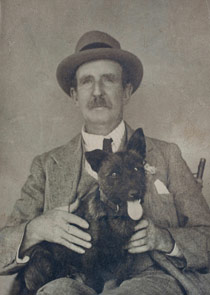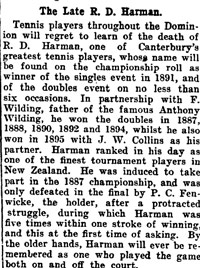The Harman family originally hailed from Ireland, but emigrated to New Zealand with the Canterbury Association on board the Sir George Seymour in 1850. Richard Dacre Harman was born in New Zealand in 1859, the son of Emma de Renzy and Richard James Strachan Harman. R.J.S. Harman was a civil engineer who had been articled to Mr George and Sir John Rennie of London. He became a prominent local body politician serving on numerous boards and councils, including the Canterbury Provincial Government.
Richard Dacre Harman attended Christ’s College from 1869 to 1877, where he probably came to know his future colleague John James Collins. After completing his schooling, Harman became articled to W.B. Armson, and later joined forces with J.J. Collins to purchase William Armson’s practice in 1887. The firm then became known as Armson Collins and Harman.
R.D. Harman was apparently a keen sportsman. He was a first class cricket representative for Canterbury from 1883 to 1886, as were two of his brothers. Harman also became the New Zealand lawn tennis singles champion in 1891, as well as clinching the doubles championship for several years running with Frederick Wilding, the father of Anthony Wilding.


